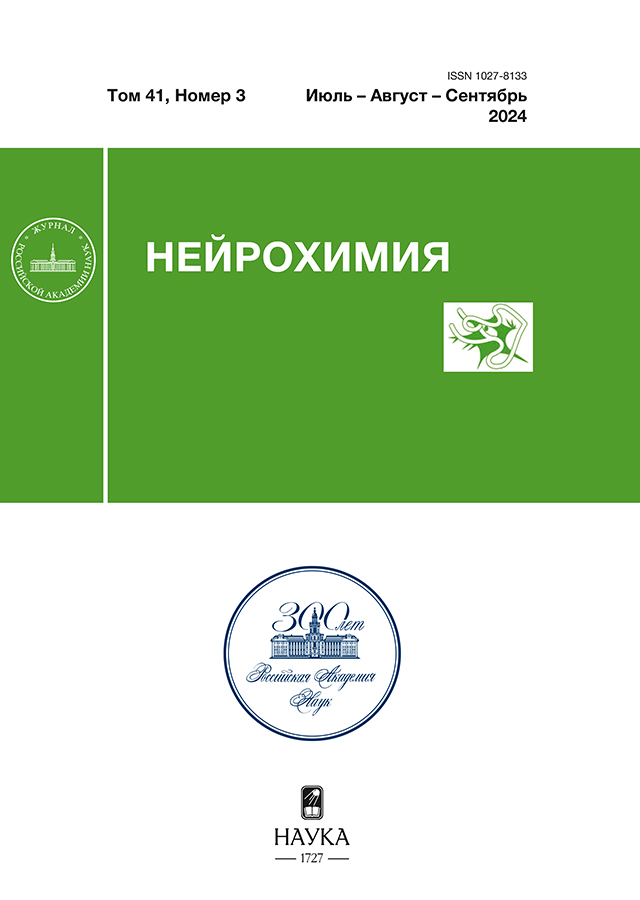Comparison of methods for isolation of extracellular vesicles from human serum
- Autores: Yakovlev А.А.1,2, Druzhkova T.A.1, Solovyeva N.А.3, Guekht A.В.1, Gulyaeva N.V.1,2
-
Afiliações:
- Scientific and Practical Psychoneurological Center named after Z.P. Solovyov DZM
- Institute of Higher Nervous Activity and Neurophysiology, Russian Academy of Sciences
- Orekhovich Institute of Biomedical Chemistry, Russian Academy of Medical Sciences
- Edição: Volume 41, Nº 3 (2024)
- Páginas: 302-308
- Seção: Clinical Neurochemistry
- URL: https://cardiosomatics.ru/1027-8133/article/view/653895
- DOI: https://doi.org/10.31857/S1027813324030108
- EDN: https://elibrary.ru/EPYXVE
- ID: 653895
Citar
Texto integral
Resumo
Extracellular vesicles (EVs) have recently become an important object of study. It is assumed that through EVs in the body, intercellular communication is carried out, including the regulation of gene expression, the control of proliferation and differentiation, and much more. The important role of EV in pathology is also shown. An important practical application of EVs is their use as markers of various pathological conditions. At present, the understanding of the molecular mechanisms of action of EVs is very limited, not least due to the methodological difficulties of studying these objects. First of all, it should be noted that there is no standardized method for isolating EVs, and this is a problem for a deeper study of EVs. We tried to choose the most appropriate method for isolating EVs from blood serum. For this, EVs were isolated from blood serum using three methods, after which the protein composition of the isolated EVs was determined using mass spectrometry. Each of the methods used has its own advantages and disadvantages, which must be taken into account when planning experiments in the future.
Texto integral
Sobre autores
А. Yakovlev
Scientific and Practical Psychoneurological Center named after Z.P. Solovyov DZM; Institute of Higher Nervous Activity and Neurophysiology, Russian Academy of Sciences
Autor responsável pela correspondência
Email: al_yakovlev@ihna.ru
Rússia, Moscow; Moscow
T. Druzhkova
Scientific and Practical Psychoneurological Center named after Z.P. Solovyov DZM
Email: al_yakovlev@ihna.ru
Rússia, Moscow
N. Solovyeva
Orekhovich Institute of Biomedical Chemistry, Russian Academy of Medical Sciences
Email: al_yakovlev@ihna.ru
Rússia, Moscow
A. Guekht
Scientific and Practical Psychoneurological Center named after Z.P. Solovyov DZM
Email: al_yakovlev@ihna.ru
Rússia, Moscow
N. Gulyaeva
Scientific and Practical Psychoneurological Center named after Z.P. Solovyov DZM; Institute of Higher Nervous Activity and Neurophysiology, Russian Academy of Sciences
Email: al_yakovlev@ihna.ru
Rússia, Moscow; Moscow
Bibliografia
- Thery C., Witwer K.W., Aikawa E., Alcaraz M.J., Anderson J.D., Andriantsitohaina R., Antoniou A., Arab T., Archer F., Atkin-Smith G.K., et al. // J. Extracell. Vesicles. 2018. V. 7. № 1.
- Belhadj Z., He B., Deng H.L., Song S.Y., Zhang H., Wang X.Q., Dai W.B., Zhang Q. // J. Extracell. Vesicles. 2020. V. 9. № 1.
- Khaspekov L.G., Yakovlev A.A. // Neurochem. J. 2023. V. 39. № 1. P. 1‒18.
- van Niel G., Carter D.R.F., Clayton A., Lambert D.W., Raposo G., Vader P. // Nat. Rev. Mol. Cell. Biol. 2022. V. 23. № 5. P. 369‒382.
- Brennan K., Martin K., FitzGerald S.P., O’Sullivan J., Wu Y., Blanco A., Richardson C., Mc Gee M.M. // Sci. Rep. 2020. V. 10. № 1.
- Dong L., Zieren R.C., Horie K., Kim C.-J., Mallick E., Jing Y., Feng M., Kuczler M.D., Green J., Amend S.R., Pienta K.J., Xue W. // J. Extracell. Vesicles. 2020. V. 10. № 2.
- Visan K.S., Lobb R.J., Ham S., Lima L.G., Palma C., Edna C.P.Z., Wu L.-Y., Gowda H., Datta K.K., Hartel G., Salomon C., Möller A. // J. Extracell. Vesicles. 2022. V. 11. № 9.
- Novikova S., Shushkova N., Farafonova T., Tikhonova O., Kamyshinsky R., Zgoda V. // Int. J. Mol. Sci. 2020. V. 21. № 18. P. 1‒29.
- Tyanova S., Temu T., Cox J. // Nat. Protoc. 2016. V. 11. № 12. P. 2301‒2319.
- Yakovlev A.A., Druzhkova T.A., Nikolaev R.V., Kuznetsova V.E., Gruzdev S.K., Guekht A.B., Gulyaeva N.V. // Neurochem. J. 2019. V. 13. № 4. P. 385‒390.
- Yerneni S.S., Solomon T., Smith J., Campbell P.G. // Biochim. Biophys. Acta Gen. Subj. 2022. V. 1866. № 2.
- Tóth E., Turiák L., Visnovitz T., Cserép C., Mázló A., Sódar B.W., Försönits A.I., Petővári G., Sebestyén A., Komlósi Z., Drahos L., Kittel Á., Nagy G., Bácsi A., Dénes Á., Gho Y.S., Szabó-Taylor K., Buzás E.I. // J. Extracell. Vesicles. 2021. V. 10. № 11.
- Wolf M., Poupardin R.W., Ebner-Peking P., Andrade A.C., Blöchl C., Obermayer A., Gomes F.G., Vari B., Maeding N., Eminger E., Binder H.M., Raninger A.M., Hochmann S., Brachtl G., Spittler A., Heuser T., Ofir R., Huber C.G., Aberman Z., Schallmoser K., Volk H.D., Strunk D. // J. Extracell. Vesicles. 2022. V. 11. № 4.
Arquivos suplementares












